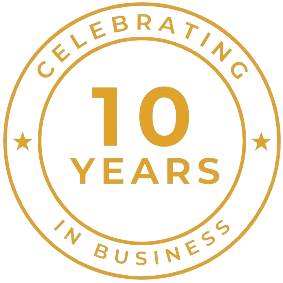Look, communication is the cornerstone to get the results that you want. Whether that’s for an entire organization to have streamlined communication across teams and departments, leaders, and individuals, whether that’s to have stellar communication for leaders to mobilize people and the direction that they want to, or whether just you as an employee with another employee, a colleague, a peer, getting them to say yes or no or agree to something – communication is the cornerstone.
Today, I want to share with you three very common barriers that we see when it comes to effective communication. The three things that we see pop up most often that are keeping people from having a truly effective message get out there.
And when I say effective, I mean your message is delivered and it gets people to do what you want them to do.
That’s the essence, so let’s start with the first barrier, which is overcomplicating the message or overcomplicating the communication. While yes, we want to provide details, we want to make sure that there aren’t details that are irrelevant to the topic at hand. All too often, I will be on-site with a team in the middle of training and we’ll be having some debrief or dialogue and I’ll say, “Tell me more.”
The tell me more shouldn’t mean I need to hear the past five years of history of 50 people involved in this, the tell me more really should be, tell me more of the details that are relevant to this point. So as you are crafting your message, whether that’s an email, whether that’s a response to someone, a presentation, really make sure that you are not overcomplicating it; that you’ve got the appropriate details, that you have the right data, the data that creates the most impact without causing confusion or too many data points.
Really keep things from being overly complicated, that is a huge barrier that we see. The second one is when people are too emotional. Now look, there is a time and a place to have emotion that’s meant for inspiring. When there’s energy that needs to be in your message, absolutely. But when the other side of emotion starts to take over, the actual communication is missed. The audience, whether that’s one person you’re speaking to, whoever is listening to this message, they are lost in your emotion, and they’re missing the key to the message.
And it’s so ironic, because just this morning as I was preparing this video, the book that I’m reading, it’s not necessarily about communication it’s about sales, but I want to read this quote to you. The author’s name is Jeb Blount, and he says, “In every sales conversation, the person who exerts the greatest amount of emotional control has the highest probability of getting the outcome they desire.” I would say Jeb hit it on the head, and not just in a sales conversation, it’s in any conversation.
The person who has the greatest emotional control, meaning they’re not letting their jealousy, their frustration, their anxiety, the negative emotions – when they’ve got those under control, they’re going to get the outcome that they desire.
Whichever person has that, that’s going to be the clear winner. So, second barrier being too emotional or emotional on the non-energy, non-enthusiasm side. And the third barrier is purely body language. We get brought in to work with people on presentations, even as little as how they’re holding a microphone, where their eye contact is, how they’re standing, what their posture is. So, our bodies convey a particular message.
And because your audience, again, whether this is just you going in to speak with a senior leader or one of your direct reports, that person, your audience sees you, your body, before most likely they ever hear a word come out of your mouth. So your body language has to be matching what the message is that you’re about to communicate. Your body does not lie, it just doesn’t.
So make sure that your body language is aligned to the message. So that’s the third barrier. Share with us, what is keeping you, what have you heard? Maybe you’ve seen this or you’ve received feedback. What’s a common barrier to effective communication that you’ve seen in the workplace? Comment below, we’d love to hear from you!

